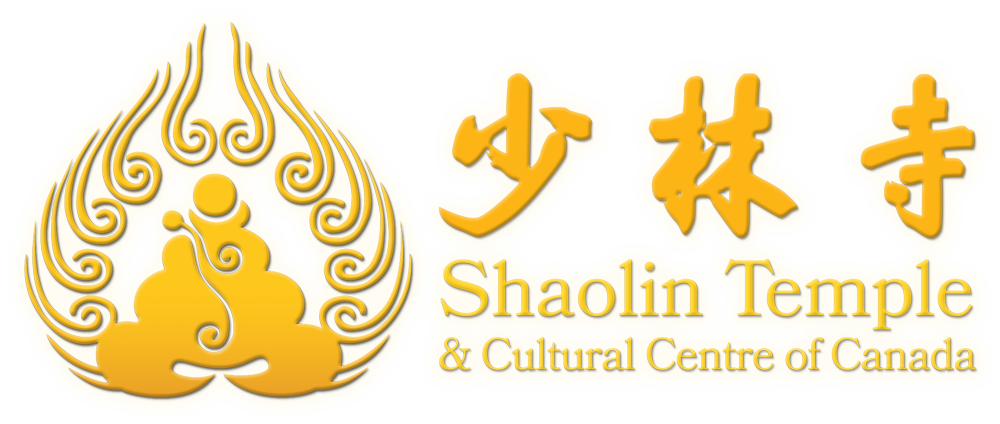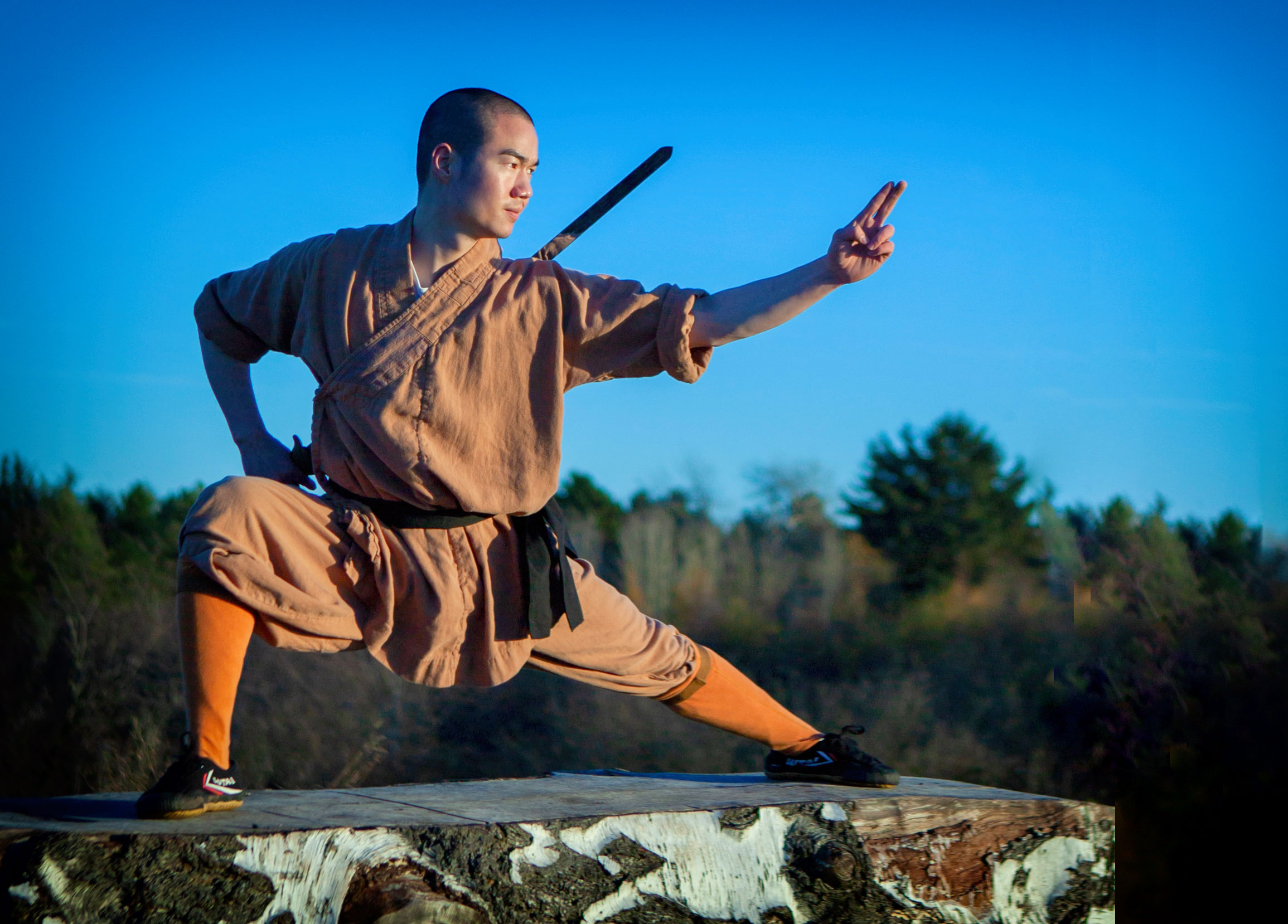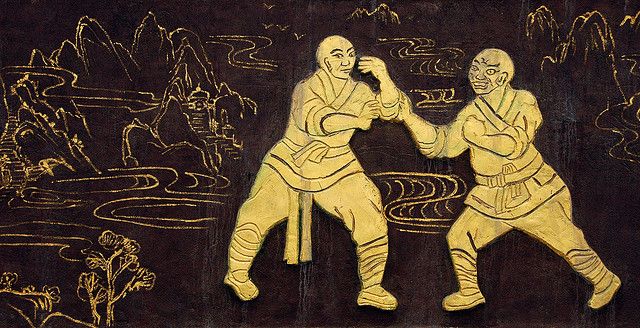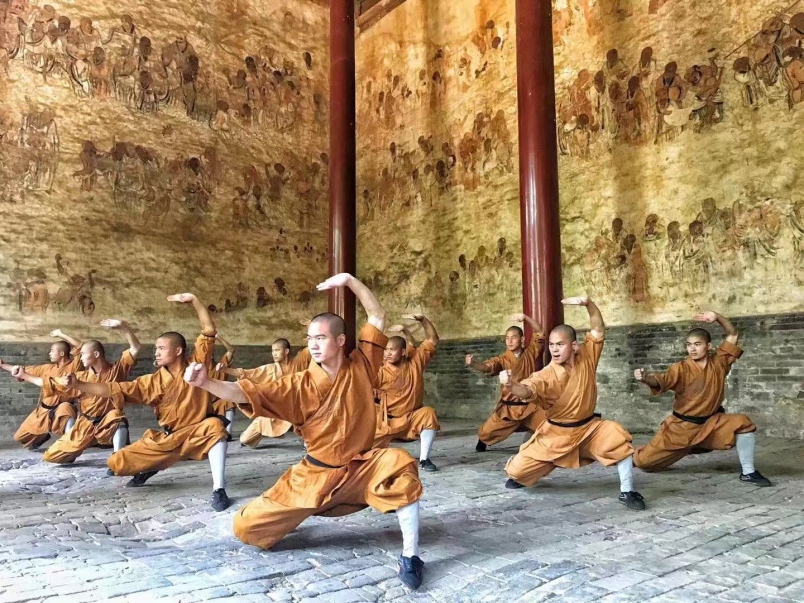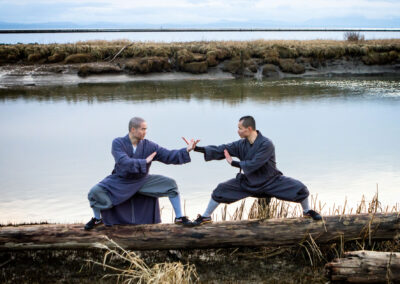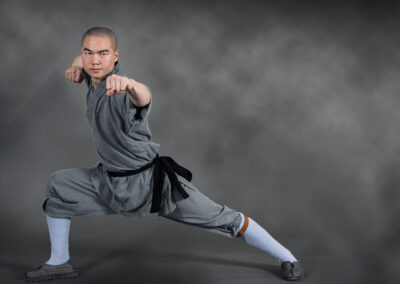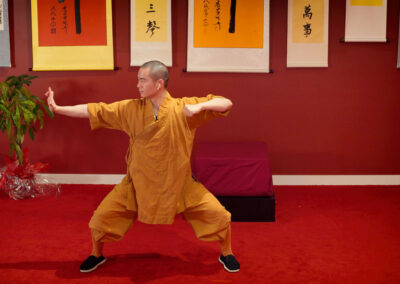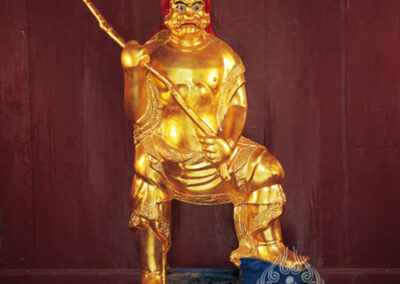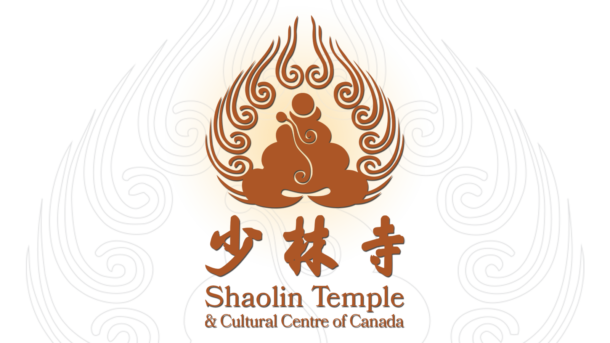Shaolin Kung Fu
Shaolin Kung Fu, Beyond Martial Arts
The profound cultural connotation of Shaolin Kung Fu is endowed by Zen wisdom. The practitioners of Shaolin Kung Fu first manifest their belief in Buddhism, including belief in wisdom and belief in power. The wisdom of Shaolin Kung Fu believes that the first ancestor of Zen Buddhism, is King Kinara. The desire for the pursuit of spirtiual wisdom have always been the pursuit of Buddhists. This is the fundamental reason why Shaolin Kung Fu behaves as a spirtual martial art, and it is also the difference between Shaolin Kung Fu and other martial arts.
The soul of Shaolin Kung Fu is Buddhist Zen wisdom belief. The initial form of Shaolin Kung Fu wisdom belief is meditation. In the sixth century, the Indian monk Bodhidharma first taught the religious method of Zen in Shaolin Temple, and the Shaolin Temple was the ancestor of Zen Buddhism. Zen Buddhism is the result of full exchange and understanding between Indian Buddhist culture and Chinese metaphysical culture after it was introduced into China. It is the crystallization of the integration of the two ancient Eastern civilizations, full of Eastern wisdom and insight into life.
Master Shi Yandi, the Abott of Shaolin Temple of Canada and his Shaolin Kung Fu brothers performing to a sold out audience of 18,000 fans at the 2020 Vancouver Canucks Chinese New Year celebration
Shaolin Kungfu refers to the traditional cultural system that has formed in the particular Buddhist cultural environment in Shaolin Temple of Songshan Mountain over long history. It is based on a belief in the supernatural power of Buddhism and fully reflects the wisdom of Chan Buddhism. The martial arts practiced by monks in the Shaolin Temple are its major form of expression.
Shaolin Kungfu encompasses complete technical and theoretical system, with martial arts and techniques as its major form of expression, and Buddhism belief and Chan wisdom as the cultural connotation.
Shaolin Kungfu is a huge and well-developed technical system as opposed to the many “schools” or “Quan styles” of other martial arts. Chinese martial arts are complicated in structure and abundant in school. According to historical records, Shaolin Kungfu is the one school among a myriad of Chinese martial arts schools, which boasts a long history, a complete system and the highest level of skills. Those Quan guidebooks handed down over many generations in Shaolin Temple show that there are as many as several hundred series of Shaolin Kungfu skills of which several dozen are widely known and practiced. There are 72 unique sets of skills and all kinds of special bodies of Kungfu techniques such as Qi Gong, grappling, wrestling, disjointing, attacking a vital point of the body etc. This wide body of skills and knowledge constitutes a huge and orderly technical system organized according to special categories and levels of difficulty.
Shaolin Kungfu is presented with the movement of the human body such as attack, defense and wrestling as its core and the series as its basic units. Series are made up of a group of movements. The design and arrangements of these movements are based on the medical knowledge of ancient China and conforms to the rule of movement of the human body. Movements and series put special emphasis on the combination of movement and stillness, the balance between Yin and Yang, the complement of toughness and softness, and the inclusion of the spirit and the form. The most well-known principle is “Six Harmonies”, composed of the three external harmonies (shoulders and hip, elbows and knees, hands and feet) and the three internal harmonies (mind and intention, intention and Qi, Qi and force). The ancient Chinese belief in “the unity of human and nature” suggests that only those movements that fit the natural structure of the human body can be called proper. Shaolin Kungfu has long been tested by history, during which it has kept its Chan Buddhist essence while weeding out from itself what was undesirable while continually undergoing change and self-reformation. As a result, Shaolin Kungfu gives full play to the potential of the human body and has achieved an optimal form of movement for the human body which allows room for its practitioners to develop and thrive.
The wisdom of Chan Buddhism has imparted profound cultural connotations to Shaolin Kungfu. The practice of Shaolin Kungfu should first be based on the belief of Buddhism including wisdom belief and strength belief. The First Patriarch Bodhidharma is revered as its deity of wisdom and Kinnara as deity of strength. The aspiration for supernatural power and pursuit of supreme wisdom has always been the goals pursued by Buddhists. This is also the main reason for Kungfu’s mystical effects and distinguishes Shaolin Kungfu from other Kungfu.
Buddhists attach great importance to the supporting role of faith for the power of the vow. The belief in “the power of vow” is an important manifestation of the belief system of Shaolin Kungfu. It was formed during Tang Dynasty when the Lotus Scripture enjoyed an exceedingly high degree of popularity. Since then, it has passed through three Buddhist historical periods, which are noted by the development of belief in the Kwan-yin, belief in the Deity of Narayan, and belief in Kinnara. The major deity in the belief system of Shaolin Kungfu is Kinnara. There is a hall dedicated to Kinnara in the Permanent Residence Complex of Shaolin Temple.
The Shaolin Kung Fu Diciple’s Creed
Principles & moral conductof Shaolin Disciples | 少林习武戒约
Shaolin Kung Fu is taught and practiced mainly by oral and physical instructions and diligent drills, using memorable formula as an aide. To attain a higher Kungfu level is almost entirely dependent on the master’s instruction and practitioners’ insight. In addition, daily Chan practices can maintain the progressive improvement in Kungfu skills. Chan School focuses on practicing in real life so as to achieve the goal of Buddhism. As part of the daily life of the monks, Shaolin Kungfu has been incorporated in the process of practicing Chan. Generally speaking, the course of practicing Shaolin Kungfu follows nine.
China Songshan Shaolin Temple, Abbot Shi Yongxin
中国嵩山少林寺 方丈 释永信
The Nine Stage of Shaolin Kung Fu
Shaolin Kung Fu is taught and practiced mainly by oral and physical instructions and diligent drills, using memorable formula as an aide. To attain a higher Kungfu level is almost entirely dependent on the master’s instruction and practitioners’ insight. In addition, daily Chan practices can maintain the progressive improvement in Kungfu skills. Chan School focuses on practicing in real life so as to achieve the goal of Buddhism. As part of the daily life of the monks, Shaolin Kungfu has been incorporated in the process of practicing Chan. Generally speaking, the course of practicing Shaolin Kungfu follows nine stages:
1) acquainting oneself with Shaolin temple and Kung fu;
2) admiring the spirit and ideal of Shaolin Kung fu;
3) making determination, and setting the goal of studying Shaolin Kungfu;
4) having obsession with Kung fu and rest assured that the goal would be achieved;
5) putting one’s determination into diligent practice;
6) comprehending the whole Kung fu system and its cultural content;
7) transforming the knowledge of Kungfu into Chan belief by incorporating Kung fu practice with Chan cultivation; in this stage, practitioner will integrate the application of Kungfu as one Dharma gate into Chan School;
8) focusing on spiritual development; in this stage, based on one’s Chan belief, Kungfu practice has become an effective approach of cultivating Buddhism, rather than an aim;
9) gaining an insight into human nature and contemplating the essence of Buddhism.
According to Chan doctrines, the nature of all phenomena is impermanence; one shall develop a mind of purification and non-attachment to eliminate afflictions and bring out enlightenment. By applying the Chan belief to Shaolin monk’s practice, Shaolin Kungfu reaches such a high level that no other Chinese martial arts could match, and boasts a distinctive feature of spiritual charm.
Ten Commandments of Shaolin Diciples | 凡此十戒
All Shaolin disciples must observe these ten precepts with strong will and faith to liberate themselves and others.
凡此十戒,自度度他,当遵不犯,志心恒念!
时维庚子惊蛰 2020 /03/ 05
1. Loyalty and respect to teachers | 一戒叛师
All Shaolin disciples must follow our commitment to respecting teachers. Understanding the Way is foremost. Follow our virtuous ancestors’ behavior, and uphold our kind mind.
凡少林弟子,须尊师守礼,明道为先;法贤进德,至善是念。
2. Gratitude to parents and teachers | 二戒忘恩
All Shaolin disciples must undertake the responsibility of repaying gratitude to parents and teachers. Any harmful behavior to others will lead to bad karma and others will not want to associate with them.
凡少林弟子,当孝恩是膺,济报有常;伤亲害友,雷怨众迁。
3. Avoiding evil behavior | 三戒诸恶
All Shaolin disciples must practice purifying their mind and kindness, following the rules of no killing, no adultery, and no lying.
凡少林弟子,当净意择善,律己从道;杀盗淫妄,功德尽捐。
4. Humility and dedication | 四戒浮艺
All Shaolin disciples must be humble and diligent in their practice, dedicating themselves to developing expertise while acquiring broad knowledge and maintaining focus. A dedicated mind achieves inner power.
.
5. Eliminating ego | 五戒偏执
凡少林弟子,须体用兼备,明体达用;禅武并重,宗风乃彰。
6. Diligence | 六戒怠惰
All Shaolin disciples must practice diligently and courageously. Kung Fu can only be achieved through continuous hard work
凡少林弟子,须敬事不辍,信理不馁;朝夕精练,久久为功。
7. Avoiding cheating and fighting | 七戒欺斗
Shaolin disciples must never use their skills to bully others.
凡少林弟子,禁逞强斗狠,恃技辱人;狂心戾气,必招悔恨。
8. No factions | 八戒帮派
All Shaolin disciples are united as one entity. There should not be any private groupings.
凡少林弟子,实同袍连枝,气属一体;挟私阴聚,伤吾浩然。
9. Respecting the reputation of others | 九戒毁他
All Shaolin disciples must respect each other following the principles of the Way. Praising oneself and disparaging others is a shameful behavior.
凡少林弟子,当和敬同道,砥砺共进;自赞毁他,当知是耻。
10. Obedience | 十戒抗诏
All Shaolin disciples must obey orders in carrying out missions for the benefit of all.
凡少林弟子,当心系大义,有召必应;苟利众生,忘身如归!
